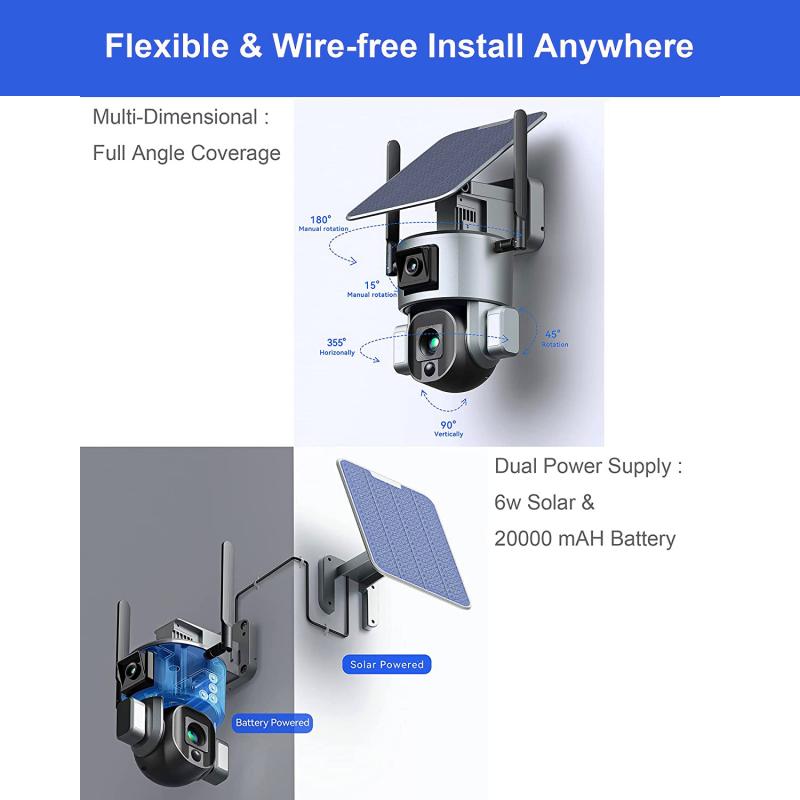What Can A 100 Watt Solar Panel Power?
Solar energy has become an increasingly popular and viable option for powering various devices and systems, especially with the growing emphasis on renewable energy sources. One of the most common entry points for individuals looking to harness solar power is the 100-watt solar panel. This article will delve into what a 100-watt solar panel can power, providing practical insights and answering common questions related to its capabilities and limitations.
Understanding the Basics of a 100-Watt Solar Panel

Before diving into what a 100-watt solar panel can power, it's essential to understand what "100 watts" means in this context. A 100-watt solar panel is rated to produce 100 watts of power under standard test conditions, which typically include optimal sunlight and temperature conditions. However, real-world conditions often vary, and factors such as shading, panel orientation, and weather can affect the actual power output.
Daily Energy Production

To determine what a 100-watt solar panel can power, we need to consider its daily energy production. On average, a 100-watt solar panel can produce about 300 to 600 watt-hours (Wh) of energy per day, depending on the amount of sunlight it receives. This range accounts for variations in geographic location, season, and weather conditions.
Practical Applications of a 100-Watt Solar Panel

Given the daily energy production, let's explore some practical applications and devices that a 100-watt solar panel can power:
1. Charging Small Electronic Devices
One of the most common uses for a 100-watt solar panel is charging small electronic devices such as smartphones, tablets, and cameras. These devices typically require between 5 to 20 watts to charge, making them well within the capabilities of a 100-watt panel. For instance, a smartphone with a 10-watt charger can be fully charged multiple times a day using the energy produced by the panel.
2. Powering LED Lights
LED lights are highly energy-efficient and can be powered by a 100-watt solar panel. A typical LED light bulb consumes about 10 watts, so the panel can power several LED bulbs for multiple hours each day. This makes it an excellent option for off-grid lighting solutions, such as in cabins, RVs, or outdoor areas.
3. Running Small Appliances
Small appliances like fans, radios, and portable coolers can also be powered by a 100-watt solar panel. For example, a small fan that consumes 20 watts can run for several hours on the energy produced by the panel. Similarly, a portable cooler with a power consumption of 50 watts can operate for a few hours, making it suitable for short outdoor trips or picnics.
4. Charging Batteries
A 100-watt solar panel can be used to charge batteries, which can then power various devices and appliances. For instance, a 12-volt battery can be charged using the panel, and the stored energy can be used to power devices during the night or on cloudy days. This setup is commonly used in off-grid solar systems and can provide a more consistent power supply.
5. Powering Laptops
Laptops typically require between 30 to 60 watts to charge, depending on the model and usage. A 100-watt solar panel can efficiently charge a laptop, making it a valuable asset for remote work or travel. With the energy produced in a day, a laptop can be charged and used for several hours.
Limitations and Considerations

While a 100-watt solar panel offers several practical applications, it's essential to be aware of its limitations and considerations:
1. Energy Storage
To maximize the utility of a 100-watt solar panel, energy storage solutions such as batteries are often necessary. This allows for the storage of excess energy produced during the day for use at night or during cloudy periods. Without energy storage, the panel's usefulness is limited to periods of direct sunlight.
2. Power Management
Efficient power management is crucial when using a 100-watt solar panel. Prioritizing essential devices and managing energy consumption can help ensure that the available power is used effectively. For instance, charging devices during peak sunlight hours and using energy-efficient appliances can optimize the panel's output.
3. Weather and Location
The performance of a 100-watt solar panel is heavily influenced by weather conditions and geographic location. Areas with abundant sunlight will see higher energy production, while regions with frequent cloud cover may experience reduced output. It's important to consider these factors when planning to use solar power.
4. System Expansion
For those with higher energy needs, a single 100-watt solar panel may not be sufficient. In such cases, expanding the system by adding more panels can increase the overall power output. This modular approach allows for scalability based on energy requirements.
A 100-watt solar panel is a versatile and practical solution for powering a variety of small devices and appliances. From charging smartphones and laptops to powering LED lights and small fans, the panel offers numerous applications for off-grid and portable power needs. However, it's essential to consider factors such as energy storage, power management, and geographic location to maximize its effectiveness.
By understanding the capabilities and limitations of a 100-watt solar panel, individuals can make informed decisions about integrating solar power into their daily lives. Whether for remote work, outdoor adventures, or emergency preparedness, a 100-watt solar panel provides a reliable and sustainable source of energy.
